Oleander Leaf Scorch Strikes Again…
Do you have oleanders? If so, you might have heard of a fatal bacterial disease called oleander leaf scorch that affects oleander shrubs.
This disease is slowly spreading and I have been seeing it more often when I visit clients.
I wrote an earlier post about oleander leaf scorch, its signs and how it affects oleander shrubs, which you can view here.
Earlier this month, I visited another client whose entire backyard was surrounded by tall oleander shrubs that were quite mature. She suspected that her oleanders were starting to show signs of oleander leaf scorch and it turns out that she was right.
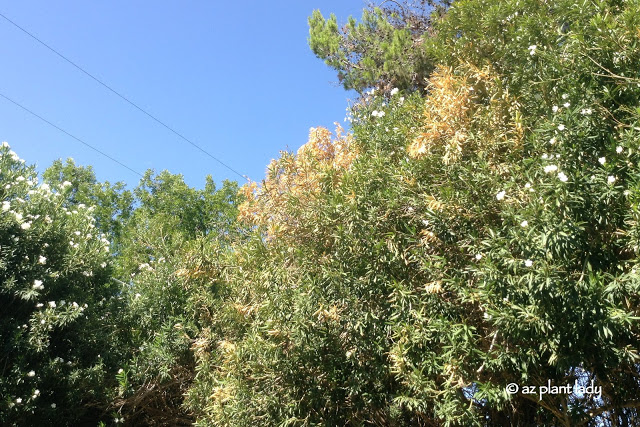
Her suspicions began when she noticed browning of her a few of her oleander shrubs that began this spring and was worsening as summer progressed.
It’s important to note that browning of oleanders doesn’t necessarily mean that they are infected with oleander leaf scorch – browning can be caused by any number of problems from drought stress, salty soil or other excess minerals in the soil.
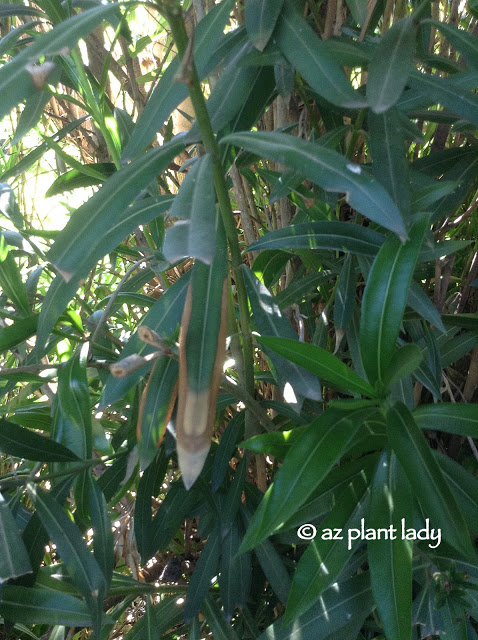
However, a closer look at the foliage showed some of the characteristics of oleander leaf scorch disease with the outer leaves and tips turning brown.
This occurs because the bacteria rapidly multiply, blocking the vascular system of the plant.
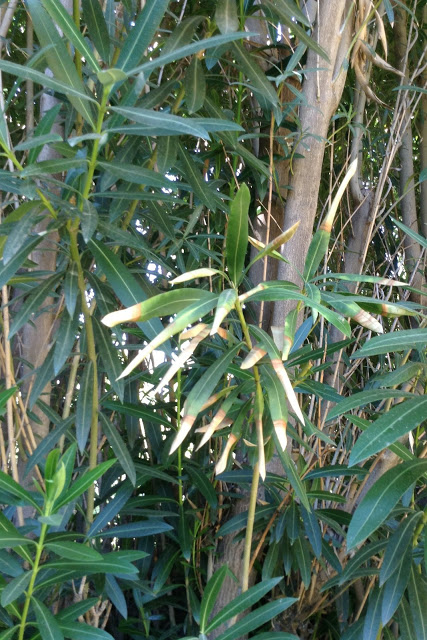
These browning tips are also a sign of oleander leaf scorch, but this particular sign can also indicate high salts in the soil.
Even if you see only a few leaves affected, the entire shrub is infected and will die within 3 – 5 years. Because this disease is spread by a flying insect called a sharpshooter, not all oleander shrubs in a given area may be affected as it hops from bush to bush. However, these insects carry the bacteria in their saliva and spread it to each oleander shrub that they feed from.
While I was able to tell my client that her oleander shrubs likely were infected this disease, the only way to confirm the diagnosis was to contact her local cooperative extension office and send in some leaves from her oleanders to be tested.
If the test comes back positive, she will need to remove all of her oleander shrubs. While they will live 3 – 5 years after being infected, they will turn brown. The most important reason for removal is to help keep the disease from spreading to other oleanders in the neighborhood.
For more photos and a detailed description of this oleander disease as well as a suggested replacement plant for oleanders, read my previous post, “Plant Disease: Oleander Leaf Scorch”

 Noelle Johnson, aka, 'AZ Plant Lady' is a author, horticulturist, and landscape consultant who helps people learn how to create, grow, and maintain beautiful desert gardens that thrive in a hot, dry climate. She does this through her consulting services, her online class Desert Gardening 101, and her monthly membership club, Through the Garden Gate. As she likes to tell desert-dwellers, "Gardening in the desert isn't hard, but it is different."
Noelle Johnson, aka, 'AZ Plant Lady' is a author, horticulturist, and landscape consultant who helps people learn how to create, grow, and maintain beautiful desert gardens that thrive in a hot, dry climate. She does this through her consulting services, her online class Desert Gardening 101, and her monthly membership club, Through the Garden Gate. As she likes to tell desert-dwellers, "Gardening in the desert isn't hard, but it is different."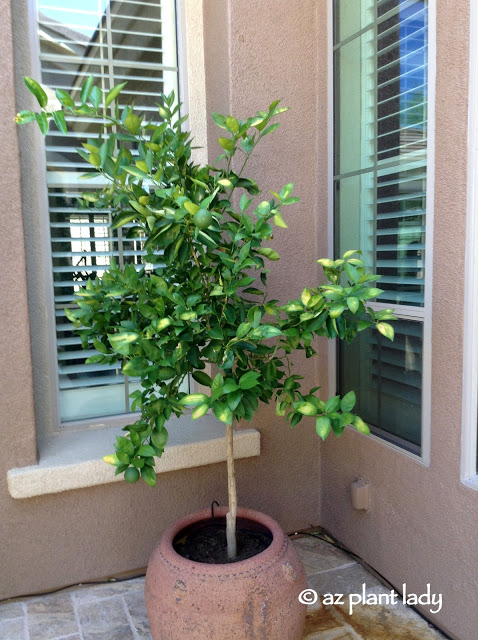
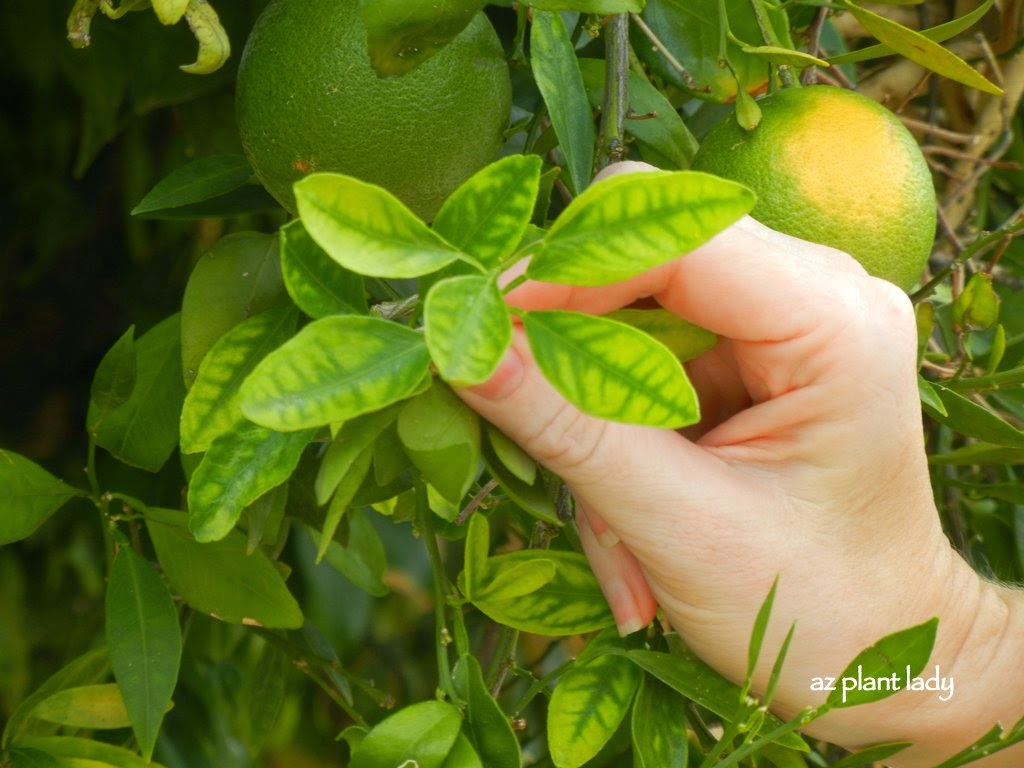
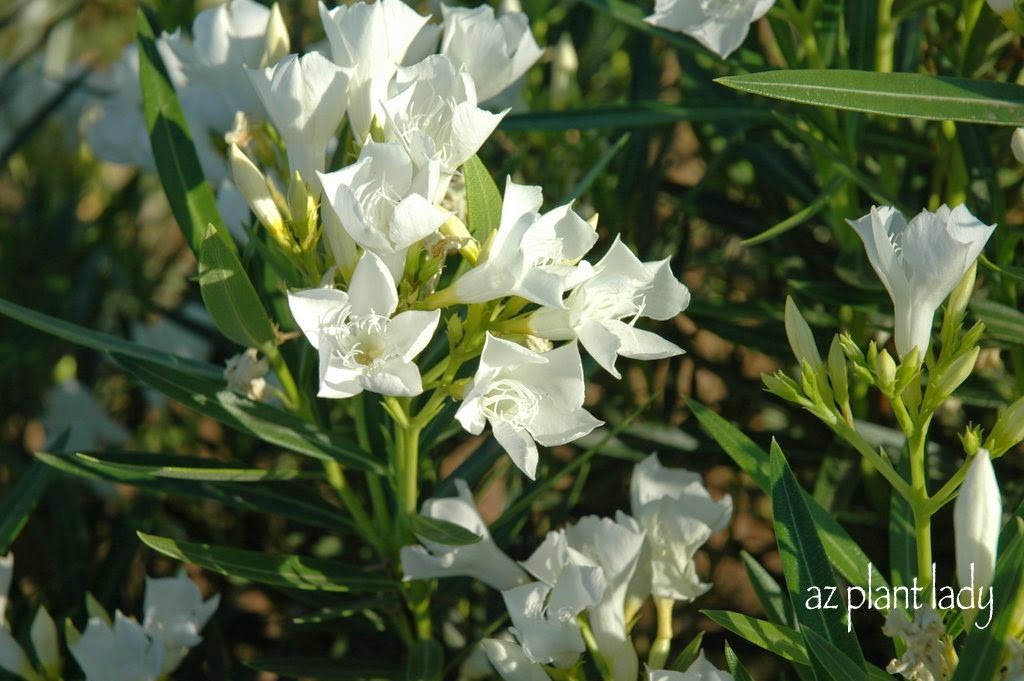
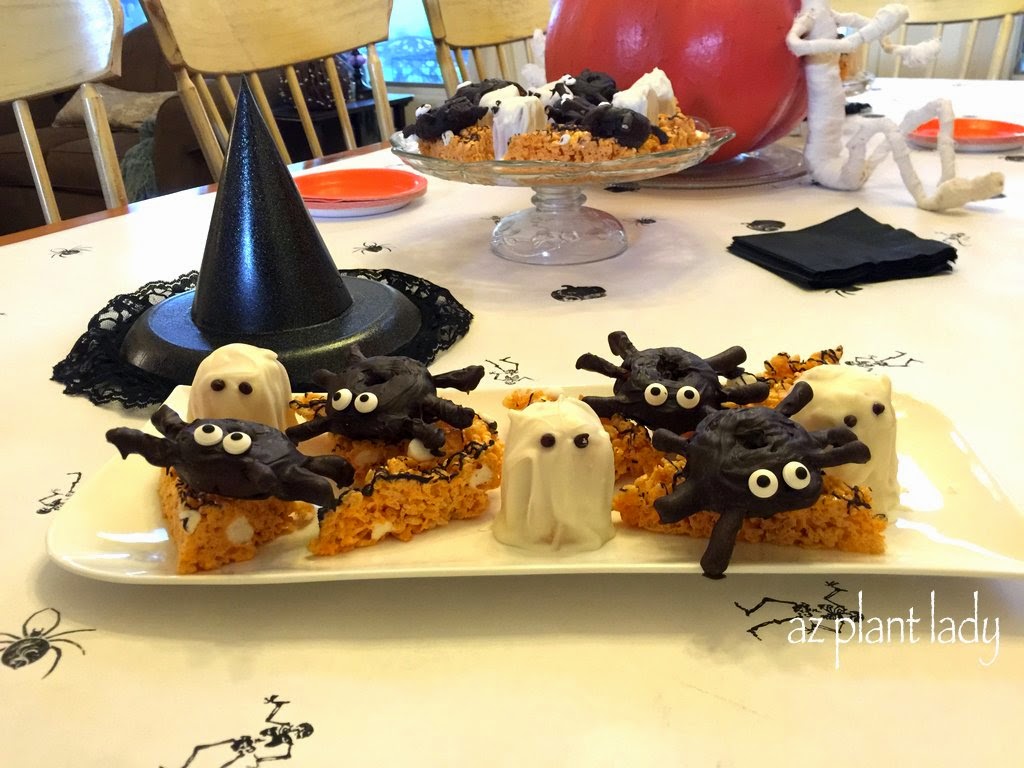
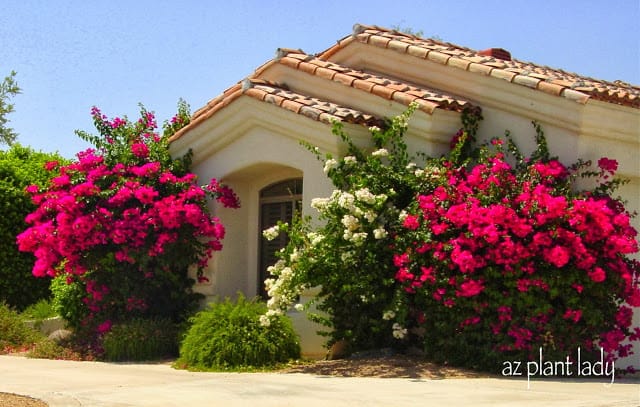








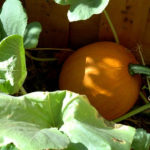
Well, it's a sad story, but your phrase "her entire backyard was surrounded" by oleanders caught my attention.
I'm guessing that oleanders are highly overplanted – often in monocultures – in your neck of the woods.
And from what I understand, that creates conditions that enable, even facilitate, the spread of pathogens and pests.
Hopefully you can convince your client to diversify the plant material in her backyard, both to prevent the spread of future diseases and to protect herself (i.e., reduce the risk of having to replace her landscaping) if/when the next disease comes along.
This is my worst nightmare. It stinks because it's the only plant that seems to do well here in Phoenix, ah! Remember the asian pear tree in our backyard? I just couldn't contain the disease it had and it's on it's way out 🙁 Those pests that spread diseases, it's kind of crazy how it can affect an entire tree/plant!
I hear this leaf scorch is related to (or the same) as the bacterial leaf scorch affecting most to all chitalpa trees in my region – needs more water and less desert soil, dryness. Though the "expert" where I lived still says it's a great tree for their desert town, even with most dying out.
But the fact that tougher oleanders are even affected…wow.
I own a tree service company and I make a specific effort to look for leaf scorch whenever I'm at a customer's home. Among the generic, "broad leaf" variety of Oleander that I see everywhere leaf scorch is very common. However I have never seen it hit the "narrow leaf" variety of Oleander. This is the Oleander that grows tall, has narrow leaves and is not as bushy. I'm not sure if it's because I haven't run into it yet or because this sub-species has some type of resistance.